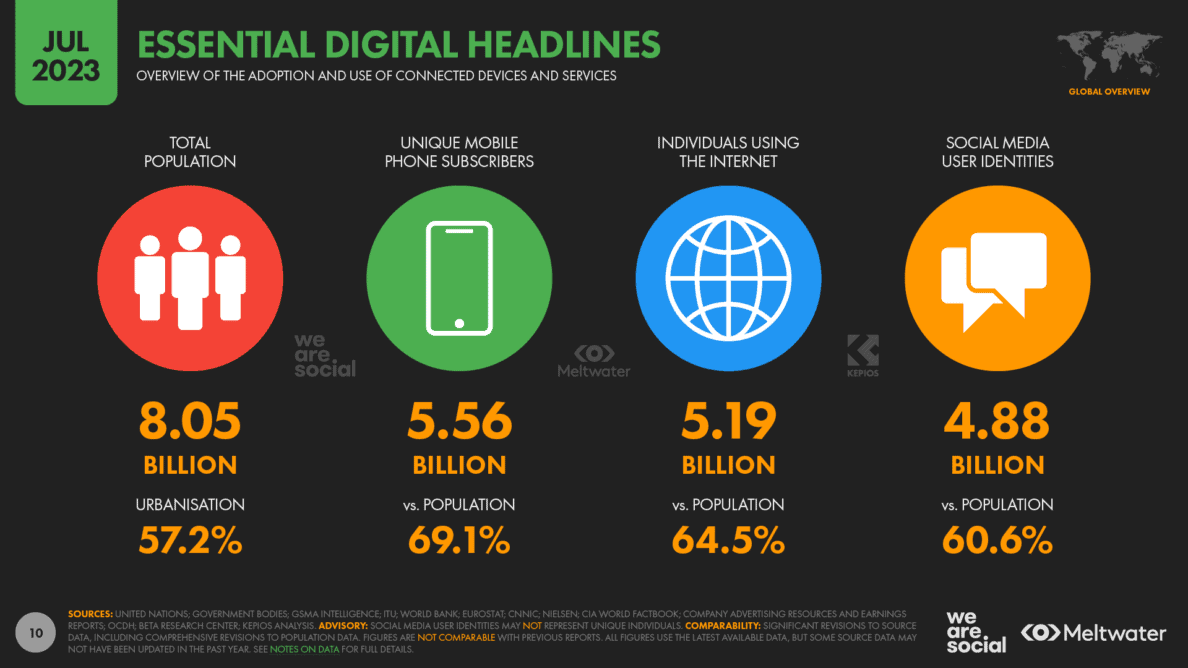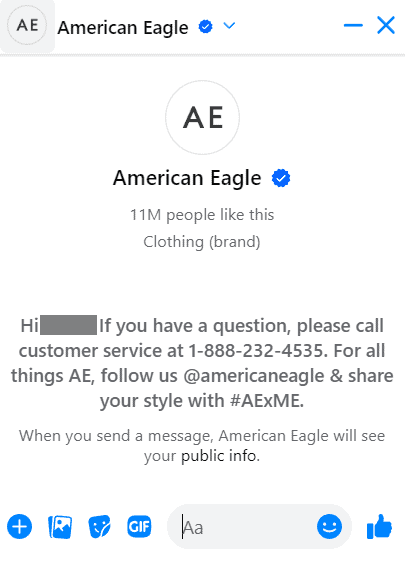In ‘ye olde days’, marketers were far more restricted in their options than they are today. They usually had only a few choices of advertising outlets, including print media, radio, and billboards. Now, with the advent of social media, opportunities have increased – and so has the ability of customers to engage with you.
With 4.9 billion people using social media, marketers can now reach more than 60% of the world’s population. That means they can market their organization’s products and services to more people in many different ways.
However, those increased opportunities also come with increased challenges. Not only are there more businesses competing for a market share, but people want to see and hear marketing messages in different ways. They’re no longer passive consumers either – they want to be heard and responded to.
What Is Content Moderation?

Social media content moderation can cover a wide range of responsibilities. Overall, it’s about managing any content that is directed at or about your business.
The first line of engagement is content that actively tags you, but that’s not where you should stop. For example, if you’re selling enterprise video software, then customers may be recommending it to others without actively including you in the conversation. You don’t need to jump in the conversation there, but it’s still important you keep tabs on it.
While some comments may be positive, or even promotional, other content may be from online trolls, be critical of aspects of your organization, or may even be a specific complaint or query. And, just as good social media messaging can help boost company growth, so too can negativity hinder it.
As the content is related to your organization, you need to be conscious that it can affect how your company is perceived. That means you can’t just engage with the nice bits. A good content moderation strategy involves replying to complaints, removing content that is obscene or contains profanities, and handling users that are abusive to others.
Why is efficient social media moderation important?
You should think of the different social media platforms you use as being no different from your website. They represent your brand and how people perceive you as a business. So, ensuring that any positive perception is maintained should be of paramount importance.
Another thing to consider is consistency. You don’t want the content and messaging on your pages/platforms to differ greatly. That also extends to how you reply to any messages and comments made on your or others’ posts.
There are a number of reasons effective moderation matters, such as:
- Safety. Marketing strategies like audience targeting and user-generated content are a brilliant way to build a community around your brand. But people need to feel safe. If your social media replies are constantly full of abuse, profanity, or hate speech, it’s unlikely people will want to engage.
- Mistakes. Marketers and content creators are only human and mistakes sometimes happen. Unfortunately, they can make you look less-than-professional. By watching for typos, broken links, and other errors, you can fix them before they garner negative attention.
- Spam. If you don’t keep a close eye on them, bots can quickly overtake your actual users in terms of engagement levels. That means genuine comments getting lost amid the noise, as well as users less willing to engage with you.
- Scams. Although closely related to spam, scams can be more dangerous in that they are seeking to defraud your customers or community members. Any identified scams should again be deleted and the poster banned. You should also report these posts to the platform, and in particularly common cases, warn your customers on your socials.

Screencap of this Facebook post
While a lot of your focus on fraud may be internal and will use things such as the COSO framework risk management process, you also need to be aware of risks to your customers from third parties.
You should also remember that social media content moderation is in effect an extension of your customer service. Some of your moderation will include answering queries and responding to complaints and how well – as well as how quickly – you do this will be another reflection on your brand.
How to build a social media content moderation strategy

Free to use image from Unsplash
In order to truly excel at content moderation, you need to have a solid strategy in place, with clear rules/guidelines as well as best practices to follow. While some of the finer details will vary based on what you offer, the following general steps should be part of any plan:
Choose a team
This exact scope of this stage will depend on the size of your organization. A larger business may have a dedicated social media team, while a smaller business may assign these duties to staff in their customer service team. Whatever you choose, it’s important that you have enough people available to cover moderation duties on all the social media platforms you utilize.
Take into account that monitoring of those platforms has to be pretty much full-time. In case of illness or absence, there have to be backups who can step into their colleagues’ shoes when needed. It’s likely you’ll need to provide regular training, as social media platforms are constantly evolving (take Twitter – sorry, X, for instance).
An alternative solution is outsourcing, much in the same way you might outsource a call center. However, it’s still worth having a set point of contact or manager to handle this, to ensure the third party is meeting your expectations.
There are particular aspects of content moderation that may also need a dedicated liaison – for instance, if you’re identifying influencers and brand ambassadors to work with, it’s worth having a specialist that can focus specifically on this.
Set out clear guidelines
While most moderation comes down to common sense, you should still provide a stated set of guidelines for your team to follow. The guidelines should reflect both your brand image and any existing social media policies and style guides.
Some general points you should think about including in your guidelines template include:
- Abuse/rudeness. There should be a clear policy on how to deal with rude or abusive comments, both to other customers and to your brand. Staff should never rise to the bait and should remain calm. There should also be guidelines as to when to ban someone.
- Hate speech/discrimination. You should really have a one-strike policy on this. If a commenter says something that is clearly hate speech or discriminatory to any group, then the comment/content should be removed and the poster immediately banned.
- Escalation. Your moderators will not always know the answers to any queries that are posted. There should be clear guidance as to when to refer to comments/questions and who they should go to. For example, any technical queries would go to tech support.
- Complaints. With social media, you will see a fair amount of negative feedback. Unhappy customers need to be dealt with calmly and efficiently. Knowing how to respond, when to take it to private messaging, and when to pass any problem to management to address needs to be clearly stated.
- Crisis management. On (hopefully rare) occasions, an online situation may snowball into a social media crisis. Recognizing when this is happening (ideally at an early stage) and having a crisis management plan is essential.

Screencap of this tweet
Create a consistent voice
Even while having multiple team members responding, you need to have a consistent voice. Do you want to sound formal, or casual? Serious, or lighthearted? Are all replies nameless, or do you acknowledge particular team members (for instance, some brands will have agents sign each post with initials, while others don’t).

Screencap of this tweet
Take the above tweet, for example. The addition of the emoji at the start turns a detailed, professional message into something a little more casual and fun – perfect for a brand that takes its products, but not itself, seriously.
Having a clear idea of the voice you want can make your moderators jobs much easier, as well as improve your brand identity via consistency.
Answer everything – within reason
Ok, this may sound like giving your moderators a lot of work but it’s all about brand image, and appearing friendly and acknowledging comments is part of that. Whether it’s a question, a complaint, or simply just tagging you in a post about a product, customers need acknowledgement.
That doesn’t mean you have to type out detailed answers to everything, however. Let’s say you’re a tech firm that deals with Apache Spark and find yourself getting asked the same questions repeatedly – ‘what is Pyspark?’, ‘can I use Python?’, or ‘do you have a machine learning option?’. Instead of responding to each of these individually, collect them and create an FAQ page. That way, you can reply to all the comments with a link to something helpful, making yourself useful and not requiring too much time from your moderators!
Finally, don’t feed the trolls! Some commenters will just be looking for ‘trouble’ and you should avoid getting overly involved in endless discussions in this scenario.
Use the platform’s tools
You will find that most social media platforms have tools that can help with your moderation. Use these as much as possible to filter out unacceptable words including profanity. You can also use these filters to highlight phrases that may be indicative of spam. Just make sure to check your spam folders regularly in case a genuine message has been wrongly identified.
When setting up any filters, think about the vocabulary used by the majority of your customer base. For example, a global company might need a less strict spam filter due to language differences – after all, ‘die’ might be a threat in English, but it simply means ‘the’ in German!
Use technology
You will find that a lot of the queries and messages you get are ones that will be repeated time and time again. You can use technology (like text moderation) in these cases to reduce the workload and to reduce the number of times you have to reply with the same answer. We’ve already mentioned having an FAQ page built of questions collected from social media, so why not go one step further and automate the responses to certain questions?

Screencap of an auto response in Facebook Messenger
Whether it’s simple auto-responses or bots that can acknowledge receipt of a message out of hours (if you don’t have a 24/7 service) to more advanced tech such as an AI conversational platform, technology can aid your moderation efforts.
Remember SEO
Many potential customers may not be in your social media communities but will find your content through a search engine. That means you need to be sure that any content you produce yourself contains good SEO (search engine optimization) words and phrases.
Checking the SEO value of your content should be done regularly. You may also choose to check the SEO value of any user generated (UGC) content, especially if you’re reposting it. For example, if you repost (with permission) a customer photo to Instagram, take the time to add your own caption that’s better optimized – and add in a thank you as well.
Support your staff
On the surface, moderation may seem like an easy task. The reality is that it can be a difficult and stressful role, especially when it gets very busy or when they face a great deal of abuse. Many scenarios will affect your staff’s mental health.

Free to use image from Unsplash
Make sure you have some sort of support system in place. For particularly stressful roles (for instance, moderating the social media of a healthcare or financial business), providing access to therapy can be well worth it.
In addition, line managers should hold regular meetings with staff to check in on how the role is working, and you should also have a debrief policy in place when a major incident or crisis has occurred.
Training and refresher courses
The world of business can change quickly, as can the technology that many organizations use. With the emergence of more advanced AI tools and better bots, you should ensure there is a high level of training for new staff and also training when new systems or processes are introduced.
Machines will never fully reproduce the empathy of human staff but they can automate repetitive tasks so that your human agents can focus on more involved situations. Just as you might look at ways of improving call center efficiency, look for ways to improve moderation.
Additionally, it’s important to pay attention to effective business writing. Being aware of business writing sins and how to avoid them can help ensure that your communication with customers and the online community remains clear, professional, and aligned with your brand’s values.
The takeaway
Social media is now an integral part of most businesses’ strategies. It can be crucial for marketing as well as just informing customers of new products, special offers, and any special events you have organized.

Free to use image from Unsplash
Your social media platforms are not just about the content you produce, however. It can also serve as another customer service channel and can be a place where people will post their own user-generated content and engage with you.
This all means that you need to be diligent when it comes to ‘policing’ what’s being said. Good moderation can ensure that your community is somewhere people want to be – which is the best way of keeping them around.

